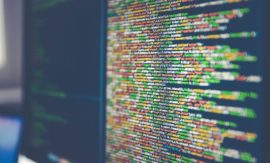Intended learning outcomes: Describe classical MRP II / ERP software. Present software for customer order production, for the process industry, for transcorporate planning & control in a supply chain, and for Customer Relationship Management (CRM). Differentiate between standard and company-specific software.
Every ERP or SCM software package has developed in a slightly different way. Some were designed for specific branches of industry, products, or production characteristics. The developers also learned their craft in a certain type of company environment, which shows in the features of the software.
Course section 9.1: Subsections and their intended learning outcomes

9.2 Contents of ERP Software and SCM Software
Intended learning outcomes: Describe classical MRP II / ERP software. Present software for customer order production, for the process industry, for transcorporate planning & control in a supply chain, and for Customer Relationship Management (CRM). Differentiate between standard and company-specific software.

9.2.1 Classical MRP II Software / ERP Software
Intended learning outcomes: Present SAP R/3 as a typical example of a classical, generally applicable ERP software package.

9.2.2 Software for Customer Order Production or the Variant-Oriented Concept
Intended learning outcomes: Describe typical software modules for customer order or variant-specific production. Identify specific software packages.

9.2.3 Software for the Process Industry or the Processor-Oriented Concept
Intended learning outcomes: Describe some typical modules of software for the process industry. Identify specific software packages.

9.2.4 SCM Software or APS Software — Software for Transcorporate Planning & Control in a Supply Chain
Intended learning outcomes: Describe the concept and some of the tasks performed by SCM software. Identify specific software packages.

9.2.5 CRM Software — Software for Customer Relationship Management
Intended learning outcomes: Produce an overview on the representation of the objects and their interrelationships of CRM software.

9.2.6 Standard Software or Company-Specific Software?
Intended learning outcomes: Explain various reasons why some companies still need company-specific software. Disclose aspects that should be taken into account when choosing between standard and company-specific software.
Course 9: Sections and their intended learning outcomes

Course 9 – ERP Software and SCM Software
Intended learning outcomes: Describe software used for logistics purposes. Explain contents of logistics software packages. Disclose factors for successful implementation of logistics software.

9.1 Software in the Area of ERP and SCM: An Introduction
Intended learning outcomes: Produce an overview on history and origin of ERP software. Disclose scope and range of ERP and SCM software.

9.2 Contents of ERP Software and SCM Software
Intended learning outcomes: Describe classical MRP II / ERP software. Present software for customer order production, for the process industry, for transcorporate planning & control in a supply chain, and for Customer Relationship Management (CRM). Differentiate between standard and company-specific software.

9.3 Factors for Successful Implementation of ERP Software and SCM Software
Intended learning outcomes: Explain possibilities and limitations of the IT support of planning & control. Disclose factors that influence individual acceptance and the range of implementation of ERP software.

9.4 Summary
.

9.5 Keywords
.

9.6 Scenarios and Exercises
Intended learning outcomes: Review factors that influence people’s acceptance of ERP software. Differentiate between standard and company-specific software. Describe basic issues of software for transcorporate planning & control.

9.7 References
.
